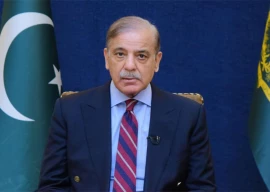
The government’s recent reversal of its regionally competitive gas tariffs for exporters has reduced its credibility, adversely affected capacity of textile exporters to invest in innovation and created energy cost disparity between the two federating units of Sindh and Punjab.
It is evident from Pakistan’s recent export growth trajectory that the government’s provision of regionally competitive energy tariffs over the last three years has been bearing fruit.
The support for the textile industry has enabled the expansion in its capacity, technological upgrade and new investment, leading to the setting up of over 100 new textile units and creating millions of jobs.
When it comes to keeping this momentum going, energy security is the most critical component – a case in point being the 27% growth in textile exports in the first four months of FY22.
Criticism has been levelled that the increase in exports is entirely due to increase in commodity values. This is certainly not the case.
Data analysis depicts a substantial increase in exports of higher value items in terms of quantity while lower value and intermediate products like yarn and grey cloth are being converted into higher value products.
A further increase in quantity is expected starting from February 2022, as many projects being funded through the Temporary Economic Refinance Facility (TERF) and Long Term Financing Facility (LTFF) – $3 billion in loans and $2 billion in equity according to the SBP – will come on stream.
Provincial pricing disparity
Provincial pricing disparity, which is widening further in the wake of recent government reversal, has far-reaching consequences. The price of gas must be equalised between Sindh and Punjab along with ensuring uninterrupted supply to all consumers.
A wholesale gas pricing formula, known as weighted average cost of gas (WACOG), is a workable solution as it allows the creation of a combined and logical gas market.
The logic of regionally competitive energy pricing and its importance for exports and economic growth needs to be emphasised once again. We have all played snakes and ladders at some point in our lives and are familiar with the game, where progress is made and suddenly derailed by an ill-timed and unexpected bite.
Industry experts believe that Pakistan’s abrupt policy reversals are playing the same game with the country’s economic fortunes.
As previously emphasised in the 2019 articles by Shahid Sattar, “Ladder and the Snake” and “The Snake Has Truly Bitten”, exports have often reached and then hovered between $20 billion and $23 billion.
Each time an economic takeoff has been anticipated in the past, and achieved by competing countries, Pakistan gets left behind due to a combination of factors – chief among which are the lack of a long-term vision, an unfavourable environment for investment and industry, and energy unavailability/ inconsistency.
This time, the “bite” in question is the government’s recent plan to end the supply of competitively priced gas to exporters – a move which will undoubtedly reverse our progress towards new investment, job creation and export growth.
Looking at the pricing and supply of gas/ re-gasified liquefied natural gas (RLNG), one can see a distorted system with provincial disparities both on account of pricing and supply mix.
The government had fixed the price of system gas at Rs600 per mmbtu and RLNG at $6.5 per mmbtu. Withdrawing the weighted average rate of $6.5 per unit for gas in Punjab will push 70% of the textile industry, Pakistan’s largest manufacturing sector, towards unfulfilled, booked export orders and possibly industry shutdown.
It is not possible for the industry in Punjab to remain competitive while getting electricity at 9 cents per unit and gas at $9 per mmbtu when other provinces are being provided gas at $4.5 per unit.
As 70% of the industry is located in Punjab, the overpriced energy will render its output uncompetitive as any downstream unit in the value chain, even within the country, will prefer imported inputs instead of expensive domestic inputs.
In this situation, local units at the high end of value chain are at risk of closure, leading to loss of jobs, especially across Punjab.
Furthermore, the provision of electricity at 9 cents per kWh in lieu of a competitive tariff is not feasible when the regionally competitive electricity tariff is 7.4 cents per kWh.
Owing to the unviable energy environment in the country, textile units even at $6.5 per mmbtu and 7.5 cents per kWh were bearing power and energy costs 2.4% more than India and 7.8% higher than Bangladesh.
The industry is, therefore, demanding that the tariff should be reverted back to 7.5 cents, as rates above the regional average would have negative consequences for exports in the long run.
Government sources claim that the reason for this policy reversal is to ease the financial burden on the government and counter the circular debt build-up. However, it is not possible to achieve financial stability without providing the minimum level of support to the industry, which has been steering economic growth for the past three years.
A long-term and consistent policy for exporters is critical as any reduction in exports would have to be met by the government through loans, thereby hurting the economy significantly.
The cost of regionally competitive energy tariffs is less than 2% of the value of exports, and the foreign exchange earned in this way does not have to be repaid or serviced at high interest rates.
Pakistan cannot afford to have an uncompetitive export-oriented sector, particularly at this pivotal stage where the economy has begun to take off.
The writer has 20 years of experience of working in international organisations and has Masters in Economics from University of London and Masters in International Affairs from SIPA, Columbia University, New York
Published in The Express Tribune, November 29th, 2021.
Like Business on Facebook, follow @TribuneBiz on Twitter to stay informed and join in the conversation.
























COMMENTS
Comments are moderated and generally will be posted if they are on-topic and not abusive.
For more information, please see our Comments FAQ